Introduction
Are you struggling with elevated blood sugar levels and wondering how to control sugar without medicine? You’re not alone. With over 96 million adults in the United States having prediabetes, finding natural ways to lower blood sugar has become more important than ever.
Managing glucose levels naturally isn’t just possible—it’s often the most sustainable approach to long-term health. When blood sugar remains consistently high, it can lead to serious complications including heart disease, kidney damage, nerve problems, and vision issues. The good news is that simple lifestyle modifications can dramatically improve your body’s ability to regulate blood sugar naturally.
This comprehensive guide will walk you through five fast and simple tricks that can help you control sugar without medicine. These evidence-based strategies focus on natural blood sugar management through dietary adjustments, physical activity, and lifestyle modifications that support your body’s insulin sensitivity.
Whether you’re dealing with prediabetes, insulin resistance, or simply want to maintain healthy glucose levels, these home remedies to manage sugar will empower you to take control of your health naturally.
Trick 1: Stay Hydrated with Water & Herbal Drinks
The Power of Proper Hydration
One of the most overlooked yet effective natural ways to lower blood sugar is maintaining proper hydration. When you’re dehydrated, your blood becomes more concentrated, leading to higher glucose readings. Drinking adequate water helps your kidneys flush out excess glucose through urine while supporting overall metabolic function.
Research published in the journal Diabetes Care shows that people who drink more water have a lower risk of developing high blood sugar levels. The study followed over 3,600 adults for nine years and found that those who drank more than 17 ounces of water daily had a 28% lower risk of developing hyperglycemia.
Best Hydration Strategies for Blood Sugar Control
Water Intake Guidelines:
- Aim for 8-10 glasses of water daily
- Drink a glass of water before each meal
- Monitor urine color—pale yellow indicates proper hydration
- Increase intake during physical activity or hot weather
Powerful Herbal Drinks for Glucose Management
Beyond plain water, certain herbal teas offer additional blood sugar management benefits:
Green Tea: Contains catechins and EGCG compounds that improve insulin sensitivity. Studies show drinking 3-4 cups daily can reduce blood sugar spikes by up to 15%.
Cinnamon Tea: This warming spice contains compounds that mimic insulin action. Research indicates that cinnamon can lower fasting blood sugar by 10-29% in some individuals.
Chamomile Tea: Beyond its calming properties, chamomile helps regulate glucose levels and may reduce complications associated with diabetes.
Bitter Melon Tea: Traditional medicine has long used bitter melon to control sugar levels naturally. It contains compounds that act similarly to insulin.
Simple Preparation Methods
- Cinnamon Water: Add 1 teaspoon ground cinnamon to warm water, let steep for 10 minutes
- Green Tea Blend: Steep 1-2 tea bags in hot water for 3-5 minutes, drink without added sweeteners
- Herbal Ice Tea: Prepare large batches and refrigerate for convenient daily consumption
Remember to avoid adding sugar, honey, or artificial sweeteners to maintain the blood sugar benefits of these natural beverages.
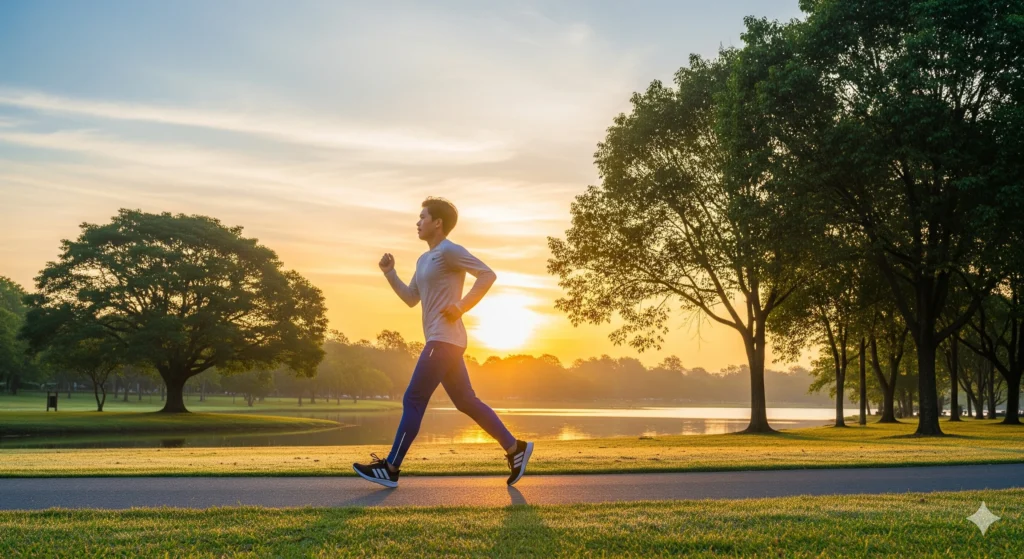
Trick 2: Walk or Move After Meals
Why Post-Meal Movement Matters
Physical activity immediately after eating is one of the most effective home remedies to manage sugar naturally. When you eat, your blood glucose levels rise as food is digested and absorbed. Light exercise helps your muscles use this glucose for energy, preventing dangerous spikes in blood sugar.
This approach to how to control sugar levels naturally is supported by extensive research. A study in Diabetes Care found that a 15-minute walk after each meal was more effective at controlling blood sugar than a single 45-minute walk at any other time of day.
The Science Behind Post-Meal Exercise
When you move after eating, several beneficial processes occur:
- Muscle Glucose Uptake: Active muscles absorb glucose from the bloodstream without requiring additional insulin
- Improved Insulin Sensitivity: Regular post-meal activity enhances your body’s ability to use insulin effectively
- Enhanced Circulation: Better blood flow helps distribute nutrients and hormones more efficiently
- Stress Reduction: Physical activity lowers cortisol levels, which can interfere with blood sugar control
Effective Post-Meal Activities
You don’t need intense workouts to see results. These gentle activities can significantly impact your glucose levels:
10-15 Minute Walks:
- Start within 30 minutes of finishing your meal
- Maintain a comfortable, conversational pace
- Choose pleasant routes to make it enjoyable
- Use stairs when available for added benefit
Yoga Stretches:
- Gentle twisting poses aid digestion and glucose metabolism
- Forward folds can help activate the parasympathetic nervous system
- Hold poses for 30-60 seconds each
- Focus on deep breathing throughout
Household Activities:
- Light cleaning or organizing
- Gardening or plant care
- Playing with pets or children
- Doing dishes or food preparation
Timing and Duration Guidelines
For optimal blood sugar management tips:
- Best Time: Start moving 15-30 minutes after eating
- Duration: Continue for 10-20 minutes minimum
- Intensity: Aim for light to moderate activity
- Frequency: After every main meal when possible
Research shows that even 2-3 minutes of movement every 30 minutes throughout the day can improve glucose control and reduce insulin resistance.
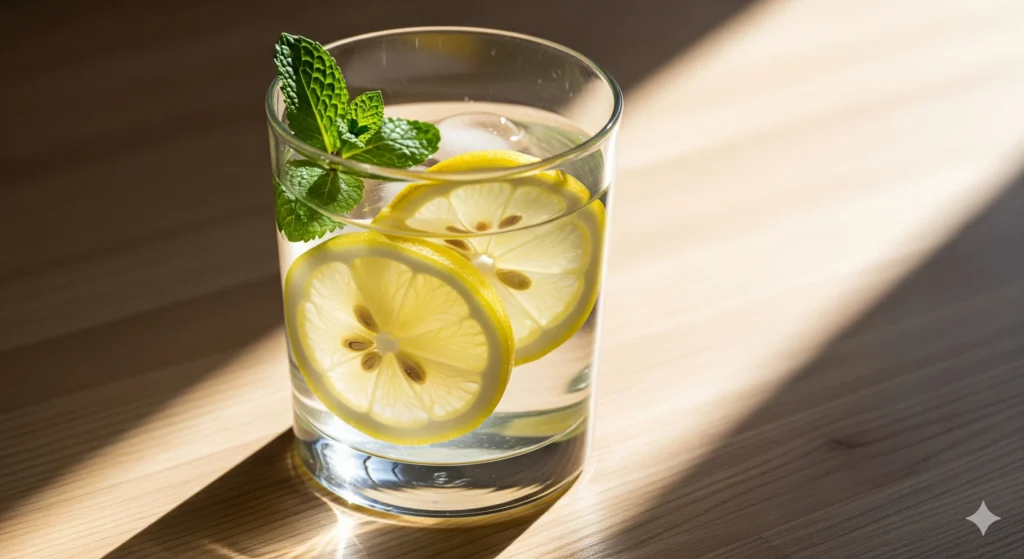
Trick 3: Eat Fiber & Protein-Rich Foods
The Fiber Advantage for Blood Sugar Control
Incorporating high-fiber foods is crucial when learning how to control sugar without medicine. Fiber acts like a natural buffer, slowing the absorption of glucose into your bloodstream and preventing dangerous spikes. This mechanism makes fiber-rich foods some of the most effective natural ways to lower blood sugar.
“Several studies, including those from Harvard Medical School, show that lifestyle changes can significantly reduce sugar spikes without medication.”Soluble fiber, in particular, forms a gel-like substance in your digestive system that slows carbohydrate absorption. This process helps maintain steady glucose levels throughout the day and reduces the burden on your pancreas to produce insulin.
Top Fiber-Rich Foods for Blood Sugar Management
Vegetables (Aim for 5-7 servings daily):
- Broccoli and cauliflower (6g fiber per cup)
- Brussels sprouts (4g fiber per cup)
- Artichokes (10g fiber per medium artichoke)
- Leafy greens like spinach and kale
- Bell peppers and zucchini
Whole Grains and Seeds:
- Oats (4g fiber per ½ cup dry)
- Quinoa (5g fiber per cup cooked)
- Chia seeds (10g fiber per ounce)
- Flaxseeds (8g fiber per ounce)
- Barley and buckwheat
Legumes and Beans:
- Black beans (15g fiber per cup)
- Lentils (16g fiber per cup cooked)
- Chickpeas (12g fiber per cup)
- Split peas (16g fiber per cup)
Protein’s Role in Glucose Stability
Protein plays a dual role in blood sugar management. It helps you feel satisfied longer, reducing cravings for sugary foods, while also slowing the digestion of carbohydrates when eaten together. This combination makes protein essential for lifestyle changes for sugar control.
High-Quality Protein Sources:
- Lean meats (chicken, turkey, fish)
- Eggs (complete protein with all essential amino acids)
- Greek yogurt (choose unsweetened varieties)
- Nuts and seeds (almonds, walnuts, hemp seeds)
- Plant-based options (tofu, tempeh, legumes)
Optimal Meal Composition for Blood Sugar Control
Create balanced meals using the “plate method”:
- ½ Plate: Non-starchy vegetables (fiber-rich choices)
- ¼ Plate: Lean protein (3-4 ounces)
- ¼ Plate: Complex carbohydrates (whole grains, starchy vegetables)
- Small Amount: Healthy fats (avocado, olive oil, nuts)
This approach ensures you get adequate fiber and protein while controlling portion sizes of carbohydrates that most directly affect blood sugar.
Placement: In the introduction, where you mention the importance of controlling sugar naturally.
Practical Implementation Tips
Morning Strategies:
- Start with oatmeal topped with berries and nuts
- Include eggs with vegetables
- Add chia seeds to smoothies
Lunch and Dinner Ideas:
- Build salads with mixed greens, beans, and lean protein
- Choose quinoa or brown rice over white rice
- Include a variety of colorful vegetables
Snack Options:
- Apple slices with almond butter
- Hummus with vegetable sticks
- Greek yogurt with berries
- A small handful of nuts
Remember to increase fiber intake gradually to avoid digestive discomfort, and drink plenty of water as fiber requires adequate hydration to work effectively.
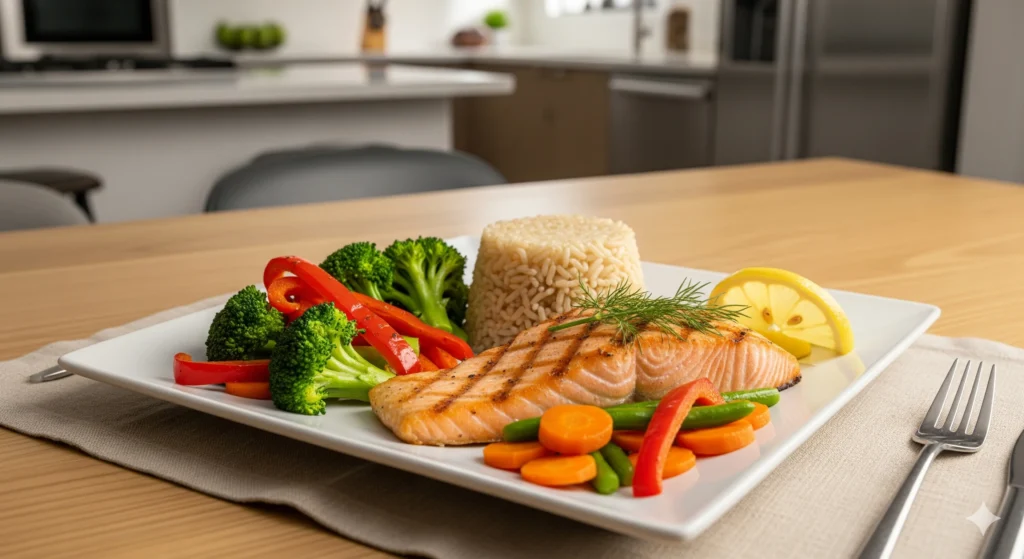
Trick 4: Add Natural Blood Sugar Stabilizers
Apple Cider Vinegar: A Powerful Glucose Regulator
Apple cider vinegar (ACV) has emerged as one of the most researched home remedies to manage sugar naturally. The acetic acid in ACV improves insulin sensitivity and can significantly reduce post-meal blood sugar spikes.
Multiple studies demonstrate ACV’s effectiveness. Research published in the Journal of Functional Foods found that consuming 2 tablespoons of apple cider vinegar before bedtime reduced fasting blood sugar by 4-6% by morning. Another study showed that taking ACV before meals reduced blood sugar spikes by 34% when eating white bread.
How to Use Apple Cider Vinegar Safely:
- Mix 1-2 tablespoons in a large glass of water
- Consume 15-20 minutes before meals
- Always dilute—never drink straight ACV
- Start with smaller amounts to assess tolerance
- Use raw, unfiltered varieties with “the mother”
Cinnamon: The Sweet Spice for Blood Sugar Control
Cinnamon contains bioactive compounds that help cells respond better to insulin, making it an excellent addition to your natural ways to lower blood sugar toolkit. The compounds cinnamaldehyde and cinnamic acid work together to improve glucose uptake by cells.
Research indicates that consuming ½ to 2 teaspoons of cinnamon daily can lower blood sugar levels by 10-29%. A systematic review of multiple studies confirmed cinnamon’s ability to reduce fasting blood glucose and improve insulin sensitivity.
Ways to Include Cinnamon:
- Sprinkle on oatmeal or yogurt
- Add to coffee or tea
- Include in cooking and baking
- Take as a supplement (consult healthcare provider first)
Fenugreek Seeds: Ancient Wisdom for Modern Health
Fenugreek seeds have been used for centuries in traditional medicine to control sugar levels naturally. These seeds contain soluble fiber and compounds that slow carbohydrate absorption and improve insulin function.
“… If you’re exploring the impact of extended fasting on glucose levels, our 72-hour fast benefits guide covers how longer fasting periods can help reset insulin sensitivity when done properly.”
Studies show that soaking fenugreek seeds overnight and consuming them in the morning can reduce fasting blood sugar by 13-25%. The seeds also help improve glucose tolerance and reduce insulin resistance.
Preparation Methods:
- Soak 1-2 teaspoons overnight, consume with water in morning
- Grind into powder and add to meals
- Steep in hot water to make tea
- Include whole seeds in cooking
Chromium-Rich Foods for Enhanced Insulin Action
Chromium is a trace mineral that enhances insulin action and improves glucose metabolism. While not everyone is chromium-deficient, ensuring adequate intake can support blood sugar management tips.
Natural Chromium Sources:
- Broccoli and green beans
- Whole grain cereals
- Lean meats
- Brewer’s yeast
- Nuts and seeds
Bitter Melon: Traditional Medicine Meets Modern Science
Bitter melon contains compounds that act similarly to insulin, helping cells absorb glucose more effectively. Studies have shown significant reductions in both fasting and post-meal blood sugar levels with regular bitter melon consumption.
How to Consume:
- Fresh juice (start with small amounts due to bitter taste)
- Cooked as a vegetable
- Dried and powdered supplement form
- Herbal tea preparation
Safety Considerations for Natural Stabilizers
While these natural remedies are generally safe, important considerations include:
- Drug Interactions: Natural stabilizers can enhance blood sugar-lowering medications
- Individual Tolerance: Start with small amounts to assess personal response
- Quality Matters: Choose high-quality, organic sources when possible
- Professional Guidance: Consult healthcare providers, especially if taking medications
These natural blood sugar stabilizers work best as part of a comprehensive approach that includes proper diet, exercise, and stress management.
Trick 5: Practice Stress Management & Better Sleep
The Stress-Blood Sugar Connection
Understanding how to reduce sugar cravings naturally requires addressing one often-overlooked factor: chronic stress. When you’re stressed, your body releases cortisol, a hormone that triggers glucose release from the liver and reduces insulin sensitivity. This biological response was designed for short-term survival situations but becomes problematic when stress is chronic.
Research published in Psychosomatic Medicine found that people with higher stress levels had significantly higher blood sugar readings, even when controlling for diet and exercise. The study followed participants for two years and demonstrated that stress management techniques could reduce HbA1c levels by 0.5-1.0%.
How Cortisol Disrupts Blood Sugar Control
Chronic stress creates a cascade of hormonal changes that interfere with natural glucose regulation:
- Increased Glucose Production: Cortisol signals the liver to release stored glucose
- Reduced Insulin Sensitivity: Stress hormones make cells less responsive to insulin
- Increased Appetite: Cortisol promotes cravings for high-carb, high-fat foods
- Disrupted Sleep: Stress interferes with sleep quality, further impairing glucose control
Effective Stress Management Techniques
Deep Breathing Exercises: The 4-7-8 breathing technique can quickly activate your body’s relaxation response:
- Inhale through nose for 4 counts
- Hold breath for 7 counts
- Exhale through mouth for 8 counts
- Repeat 4-6 cycles, practice 2-3 times daily
Mindfulness Meditation: Even 10-15 minutes daily can significantly reduce stress hormones:
- Find a quiet space and comfortable position
- Focus on breath awareness
- When thoughts arise, gently return attention to breathing
- Use apps or guided meditations for beginners
Progressive Muscle Relaxation: This technique helps release physical tension:
- Start with toes, tense muscles for 5 seconds, then relax
- Work systematically up through each muscle group
- Notice the contrast between tension and relaxation
- Practice before bed for improved sleep quality
The Critical Role of Quality Sleep
Sleep deprivation is a significant risk factor for insulin resistance and poor blood sugar control. When you don’t get adequate sleep, your body produces more cortisol and less growth hormone, both of which negatively impact glucose metabolism.
Studies show that getting less than 6 hours of sleep per night increases diabetes risk by 28%. Conversely, improving sleep quality can enhance insulin sensitivity by up to 25% in just one week.
Sleep Hygiene for Better Blood Sugar Control
Establish Consistent Sleep Schedule:
- Go to bed and wake up at the same time daily
- Aim for 7-9 hours of sleep nightly
- Create a 30-minute wind-down routine
- Keep bedroom cool, dark, and quiet
Pre-Sleep Nutrition Strategies:
- Avoid large meals 3 hours before bed
- Include protein in dinner to stabilize overnight glucose
- Consider a small bedtime snack if needed (nuts, Greek yogurt)
- Limit caffeine after 2 PM
Technology and Sleep:
- Stop screen use 1 hour before bed
- Use blue light filters on devices if necessary
- Keep phones outside the bedroom
- Consider blackout curtains or sleep masks
Quick Stress-Relief Techniques for Daily Use
When stress hits throughout the day, these rapid techniques can help maintain stable blood sugar:
5-Minute Desk Meditation:
- Close eyes and focus on breathing
- Count breaths from 1 to 10, repeat
- Use during work breaks or transitions
Nature Breaks:
- Step outside for fresh air and sunlight
- Look at trees, sky, or natural elements
- Even 2-3 minutes can reset stress response
Gratitude Practice:
- List three things you’re grateful for daily
- Write them down for enhanced effect
- Focus on specific details rather than generalizations
The Exercise-Sleep-Stress Triangle
Regular physical activity supports both better sleep and stress management while directly improving blood sugar control. This creates a positive cycle where each element reinforces the others.
Timing Exercise for Maximum Benefit:
- Morning exercise can improve sleep quality that night
- Avoid intense workouts within 3 hours of bedtime
- Evening gentle yoga or stretching can promote relaxation
- Consistency matters more than perfect timing
By addressing stress and sleep quality alongside diet and exercise, you create a comprehensive approach to how to control sugar without medicine that addresses root causes rather than just symptoms.
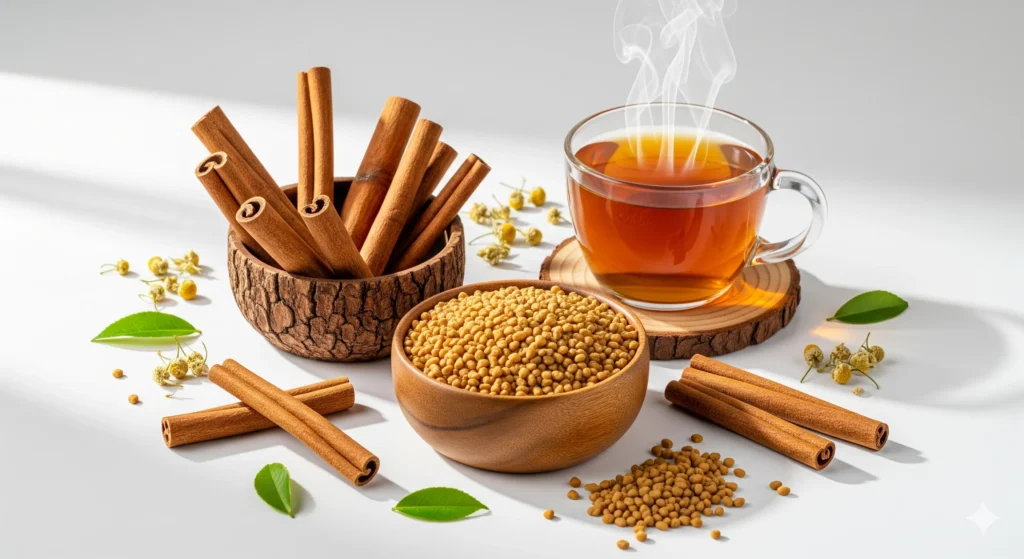
Additional Lifestyle Tips for Long-Term Success
Avoid Refined Carbohydrates and Processed Foods
One of the most impactful lifestyle changes for sugar control involves eliminating or dramatically reducing refined carbohydrates. These foods cause rapid blood sugar spikes and contribute to insulin resistance over time.
Foods to Minimize or Avoid:
- White bread, pasta, and rice
- Sugary beverages and fruit juices
- Processed snack foods and crackers
- Pastries, cookies, and candy
- Fast food and fried foods
Smart Substitutions:
- Choose whole grain bread over white bread
- Replace sugary drinks with water, herbal tea, or sparkling water with lemon
- Snack on nuts, seeds, or vegetables instead of chips
- Use cauliflower rice or spiralized vegetables instead of regular pasta
- Satisfy sweet cravings with berries or small amounts of dark chocolate (85% cacao or higher)
Master the Art of Meal Planning
Successful blood sugar management requires consistent, well-planned meals. When you plan ahead, you’re less likely to make impulsive food choices that spike your glucose levels.
Weekly Meal Planning Strategy:
- Choose one day for meal planning and grocery shopping
- Prepare ingredients in advance (wash vegetables, cook grains, portion proteins)
- Include a variety of colors and nutrients in each meal
- Plan for healthy snacks to avoid vending machine temptations
Batch Cooking Ideas:
- Prepare large batches of quinoa, brown rice, or lentils
- Roast several types of vegetables at once
- Cook proteins in bulk (grilled chicken, baked fish, hard-boiled eggs)
- Make healthy soups and stews that can be frozen in portions
The Importance of Regular Health Monitoring
While learning how to control sugar levels naturally, it’s crucial to monitor your progress and maintain regular contact with healthcare providers. This approach ensures your natural methods are effective and safe.
Home Monitoring Tools:
- Blood glucose meter for checking levels
- Food diary to track meals and blood sugar responses
- Activity tracker to monitor exercise and sleep
- Blood pressure monitor (high BP often accompanies blood sugar issues)
Healthcare Team Communication:
- Schedule regular check-ups with your primary care physician
- Consider working with a registered dietitian
- Monitor HbA1c levels every 3-6 months
- Discuss any concerning symptoms promptly
Building Sustainable Habits
The key to long-term success with natural ways to lower blood sugar lies in creating sustainable habits rather than relying on temporary fixes.
Habit-Building Strategies:
- Start with one change at a time
- Use habit stacking (attach new habits to existing routines)
- Track your progress visually (charts, apps, journals)
- Celebrate small victories along the way
- Have backup plans for challenging situations
Social Support Systems:
- Share your goals with family and friends
- Join online communities or support groups
- Consider working with a health coach
- Find an exercise buddy or walking partner
Dealing with Setbacks and Plateaus
Everyone experiences challenges when implementing lifestyle changes. Preparing for setbacks helps you stay on track with your blood sugar management goals.
Common Challenges and Solutions:
- Travel: Pack healthy snacks, research restaurant options, maintain exercise routine
- Social Events: Eat before attending, bring a healthy dish, focus on socializing rather than food
- Busy Schedules: Prioritize sleep, use quick healthy meal options, incorporate movement into daily tasks
- Emotional Eating: Develop alternative coping strategies, address underlying stress, seek professional help if needed
Remember that managing blood sugar naturally is a marathon, not a sprint. Consistency and patience with yourself will yield the best long-term results.
Frequently Asked Questions (FAQs)
What food lowers blood sugar quickly?
Several foods can help lower blood sugar relatively quickly when consumed as part of a balanced approach:
- Cinnamon can reduce blood sugar spikes by up to 29% when consumed before meals
- Apple cider vinegar mixed in water 20 minutes before eating can reduce post-meal glucose by 34%
- Leafy greens like spinach and kale have minimal carbs and help stabilize levels
- Protein-rich foods like eggs, fish, or Greek yogurt slow glucose absorption
- Fiber-rich vegetables such as broccoli and cauliflower prevent rapid spikes
Remember that “quickly” is relative—sustainable blood sugar control happens over hours and days, not minutes. Always pair these foods with overall healthy eating patterns.
Can I control sugar levels without medicine?
Yes, many people can effectively control sugar levels without medicine, especially in cases of prediabetes or early-stage type 2 diabetes. Research shows that lifestyle interventions can be as effective as medication for preventing diabetes progression.
Successful natural management typically includes:
- Consistent dietary changes focusing on whole foods
- Regular physical activity (150 minutes weekly minimum)
- Stress management and adequate sleep
- Weight management if needed
- Regular monitoring and healthcare provider communication
However, some individuals may eventually need medication despite excellent lifestyle practices. Work with your healthcare team to determine the best approach for your specific situation. Never stop prescribed medications without professional guidance.
Is apple cider vinegar safe for pre-diabetics?
Apple cider vinegar is generally safe for most people with prediabetes when used properly. Multiple studies support its effectiveness for blood sugar control without significant side effects.
Safe Usage Guidelines:
- Always dilute in water (1-2 tablespoons per 8 ounces)
- Never drink undiluted ACV (can damage tooth enamel and throat)
- Start with smaller amounts to assess tolerance
- Take before meals for maximum benefit
- Choose raw, unfiltered varieties with “the mother”
Potential Considerations:
- May interact with blood thinning medications
- Can affect potassium levels if consumed in large amounts
- May cause digestive upset in sensitive individuals
- Should be avoided by those with gastroparesis
Consult your healthcare provider before adding ACV to your routine, especially if you take medications.
How much walking helps reduce sugar?
Research shows that even modest amounts of walking can significantly impact blood sugar control. The optimal approach involves both timing and duration:
Post-Meal Walking:
- 10-15 minutes after each main meal
- Can reduce blood sugar spikes by 20-30%
- More effective than one longer walk per day
- Light to moderate pace is sufficient
Daily Walking Goals:
- Aim for at least 30 minutes total daily
- Can be broken into shorter segments
- 7,000-10,000 steps per day shows significant benefits
- Consistency matters more than perfect daily targets
Research-Backed Results:
- A study in Diabetes Care found 15 minutes of post-meal walking was more effective than 45 minutes at other times
- Regular walking can improve insulin sensitivity by 23-85%
- Even 2-3 minutes of walking every 30 minutes helps
Start with what you can manage and gradually increase duration and frequency.
“… For example, incorporating anti-inflammatory foods such as raw onion can add layers of immune and digestive support. Learn more about the unexpected benefits of eating raw onion in this detailed guide.”
How long does it take to see results from natural blood sugar control methods?
Timeline for results varies by individual and method used, but here’s what research typically shows:
Immediate (Same Day):
- Post-meal walking effects: 15-30 minutes
- Apple cider vinegar impact: 1-2 hours
- Stress reduction techniques: 5-30 minutes
Short-term (1-2 Weeks):
- Dietary changes show measurable effects
- Sleep improvement impacts become apparent
- Exercise routine benefits become noticeable
Medium-term (1-3 Months):
- HbA1c improvements become measurable
- Weight loss (if applicable) begins affecting blood sugar
- Habit formation makes methods easier to maintain
Long-term (3-6 Months):
- Significant insulin sensitivity improvements
- Sustainable lifestyle patterns established
- Maximum benefits from comprehensive approach achieved
Remember that consistency is key—irregular application of these methods will delay results. Track your progress to stay motivated during the initial adjustment period.
Are there any risks to managing blood sugar naturally?
While natural blood sugar management is generally safe, there are some considerations:
Potential Risks:
- Delaying necessary medical treatment
- Drug interactions with natural supplements
- Unrealistic expectations about timeline or results
- Neglecting regular medical monitoring
Safety Guidelines:
- Never stop prescribed medications without medical supervision
- Monitor blood sugar regularly to ensure methods are working
- Maintain regular healthcare provider communication
- Be realistic about what natural methods can achieve
- Seek immediate medical attention for concerning symptoms
When to Seek Medical Help:
- Blood sugar consistently above 200 mg/dL
- Symptoms like excessive thirst, frequent urination, blurred vision
- Unexplained weight loss or fatigue
- Poor wound healing or frequent infections
Natural methods work best as part of a comprehensive approach that includes professional medical guidance.
Conclusion
Learning how to control sugar without medicine is not only possible but can be highly effective for many people dealing with prediabetes, early-stage diabetes, or those simply wanting to maintain optimal health. The five tricks outlined in this comprehensive guide—proper hydration, post-meal movement, fiber and protein-rich foods, natural blood sugar stabilizers, and stress management—provide a solid foundation for natural glucose control.
The journey to better blood sugar management through natural ways to lower blood sugar requires patience, consistency, and a willingness to make sustainable lifestyle changes. Remember that small, consistent actions compound over time to create significant health improvements. Whether it’s taking a 15-minute walk after dinner, starting your day with diluted apple cider vinegar, or prioritizing 7-9 hours of quality sleep, each positive choice moves you closer to your health goals.
These home remedies to manage sugar work synergistically—when combined, their effects are greater than the sum of their parts. A person who stays well-hydrated, exercises regularly, eats a balanced diet rich in fiber and protein, uses natural stabilizers wisely, and manages stress effectively will see better results than someone who focuses on just one area.
It’s important to remember that while lifestyle changes for sugar control can be remarkably effective, they work best as part of a collaborative relationship with your healthcare team. Regular monitoring, open communication with your physician, and realistic expectations will help ensure your natural approach to blood sugar management is both safe and successful.
The path to controlling sugar levels naturally is not about perfection—it’s about progress. Start with the tricks that resonate most with you, build them into sustainable habits, and gradually incorporate additional strategies. Your future self will thank you for taking these important steps toward better health today.
Take action now: choose one or two of these evidence-based methods and begin implementing them this week. Track your progress, celebrate your successes, and remember that every positive choice you make is an investment in your long-term health and vitality. With dedication and the right approach, the ability to control sugar without medicine is not just a possibility—it’s an achievable goal that can transform your health and quality of life.



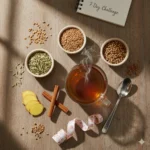


Leave a Reply